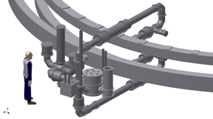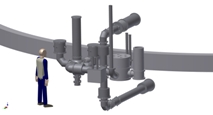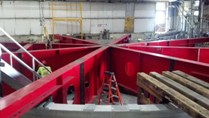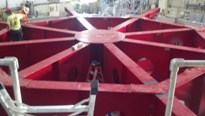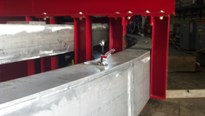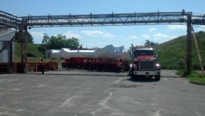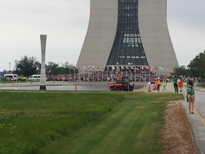|
The new g-2 Experiment at FNAL
One of the first projects Bartoszek Engineering worked on back in the early 90's was designing a vacuum window for the original g-2 experiment at Brookhaven Laboratory. BE designed the window and it was successfully built and used in the experiment but no one from BE ever had a chance to see the accelerator in its prime at BNL.
In July of 2010 and March of 2012, Larry got to see the g-2 Muon storage ring at BNL. g-2 was built during the early days of the transition from paper drawings to CAD. Bartoszek Engineering was hired to make a modern CAD solid model of the accelerator to allow transportation companies to figure out how to move the superconducting magnet from BNL to Fermilab. This required modeling the cryostat from TIFF files of the original drawings and making measurements of the actual components on-site for missing dimensions. The reason this was a non-trivial move is that the SC cryostat for the accelerator is a torus 50 feet in outer diameter. The cryostat could not be disassembled because it was wound from a single long strand of superconducting wire. It had to be moved in one piece! The journey of the Big Move of the cryostat from BNL to FNAL is documented at The Big Move page.
Click on any of the thumbnails to get an enlarged view. You are welcome to download any of the images. If they are used for other than private viewing, credit to the g-2 collaboration and Bartoszek Engineering would be appreciated.
Almost hidden in this picture is the rectangular vacuum window made out of mylar that let particles out of the storage ring to be detected. The window is behind the protective aluminum plate cover next to the numbers "37" and "38".
The way the ring looked in 2011 before disassembly
Renderings of the Solid Model of the Cryostat
The picture on the left shows the three individual cryostats that contain the superconducting wire of the magnet. Each cryostat is connected in series at the interconnects shown in the right picture. The interconnects had to be partially disassembled to allow the transport fixture to be assembled, but the three cryostats were never completely separated. (We weren't sure in early discussions whether we would have to separate them all, but the winning bidder (Emmert International) preferred to move them all together.)
These three pictures show the interconnects that had to remain on each of the cryostats. The outer cryostat (bottom picture) had to have the most extra hardware attached to it during the entire transport. Special fixturing designed by Del Allspach of FNAL supported the interconnects from the transport fixture designed by Emmert.
Assembly of the Transport Fixture
The three cryostats had to be supported to prevent more than a couple of millimeters of deflection during the whole voyage from BNL to FNAL. A large red rigid frame was assembled around the magnets to protect them.
The Journey by Truck and Barge
The magnet left BNL on a large special truck. The picture on the right shows the barge approaching the dock on the North side of Long Island.
The cryostat and its transport frame were loaded onto the barge by crane. The barge sailed down the East coast, around the tip of Florida and up the river system paralleling the Mississippi River. Once it arrived in Lemont, IL, the cryostats were lifted off the barge by crane and placed on a special truck. The truck had many independently powered and steered wheels. The truck drove up the tollway system to Fermilab.
The Magnet Arrives at FNAL
There was a great crowd waiting for the magnet to drive up near the Hi Rise at Fermilab. The magnet is in temporary storage waiting to be installed in the new Muon G-2 building.
Back to the Bartoszek Engineering Projects Page
Back to the Bartoszek Engineering Home Page
|

